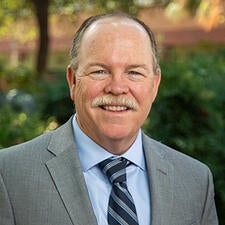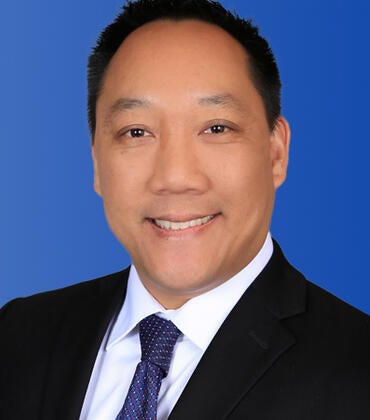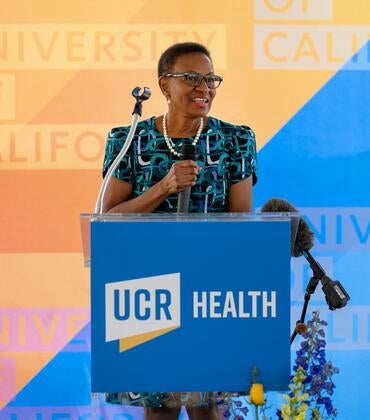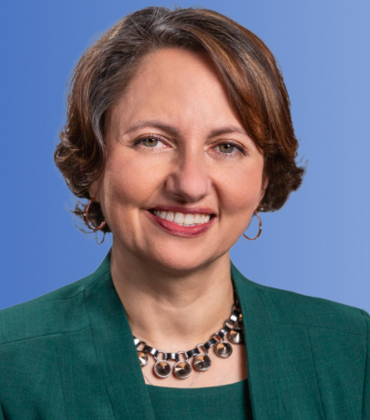

With a population of 4.8 million people, Inland Southern California’s population increased approximately 10% from 2010-2020 — a growth that presents significant challenges and opportunities for the future of healthcare. As a healthcare community, we need to evolve to meet those challenges.
Riverside County is currently facing a perfect storm of healthcare challenges. Our patients have higher rates of chronic conditions and behavioral health issues. More than 50% of residents rely on government insurance structures, creating disparities in access to providers. Further, we have the lowest primary care and specialist physician ratios in the state. This fragmented provider network, coupled with hospital consolidation, has reduced access for the population.
Setting strategic initiatives and achieving goals
At UCR Health, we believe that the answer to these challenges is to lead the way forward, developing strategic plans with achievable goals that align with our mission to deliver integrated, patient-centered care while addressing the region’s most pressing health challenges.
Current initiatives include adopting technology to enhance the patient experience through leveraging technology such as telehealth and artificial intelligence. We are working to increase our ambulatory clinics, specialty services, and expand our geographic network. Everything we do and plan happens by continually asking ourselves one question: How does this help us provide high-quality, accessible care and does this improve accessibility?
The answers we get become the lens through which we examine our strategies, monitor our progress, and ensure we remain accountable. Answers also provide the guardrails needed to navigate additional challenges.
Defining Core Values
To succeed in a competitive market, health systems must clearly define their core values and vision. Without a strong goal at the center, organizations will fail to respond to market pressures, while focusing on chasing after short-term solutions that don’t align with their identity. Over the years, we’ve seen numerous high-profile systems fail because they are not focused on their ultimate goal. That goal must be the patient and patient care.
Our core values must be trust rooted in consistent, compassionate care, clear communication, and an unwavering commitment to innovation and evidence-based practices. To live our trust, we must filter it through every aspect of our business, from hiring and training to leadership development.
Staying Agile
The healthcare industry is evolving at an unprecedented pace, and staying agile is essential. But agility must not come at the expense of an organization’s identity. At UCR Health, we are continually listening to our patients, our community, and our staff. By maintaining an open dialogue, we ensure that we remain adaptable.
This adaptability includes technology in patient care. New tools, especially in artificial intelligence and machine learning, hold tremendous potential to improve care delivery. However, we must ensure that both, as well as any others, integrate seamlessly into the care process without diminishing the personal connection that is foundational to healthcare. For example, our current work with AI for improving patient documentation is a pilot initiative that will be evaluated based on the value it creates for the patient as well as for clinical staff.
Along with asking how does this improve the patient experience, we also now ask: how can we ensure the technology enhances, rather than replaces, human interaction?
Resource requirements for long-term viability
Due to declining reimbursement and government funding, Inland Empire hospitals have reduced the number of medical school rotations, residencies and other training programs. This presents a unique challenge as UCR reaches a point where it can no longer fund the clinical enterprise without a hospital to educate medical school students and develop residency programs. Without an aggressive and proactive care coordination and integration approach, growth in population along with the increasing complexity of both healthcare and health inequities, more strain and stress will be placed on our system.
What do we have planned?
- Improve access to care and costs of care by creating additional clinic locations;
- Integrate ambulatory care into our network;
- Increase access to specialty services such as oncology, cardiovascular disease and neurosciences;
- Expand access to managed care contracts, management service organization services, care coordination and support functions;
- Integrate a delivery network among other UCs and community providers to address comprehensive care needs;
- Increase access to training – hospital and ambulatory – to increase the number of School of Medicine students to 500;
- Expand residency training for critical specialties such as OB/GYN, cardiology, urology and gastrointestinal disorders.
All of this will help us make informed decisions about resource allocation and strategic partnerships that focus on the patient experience.
Building a strong healthcare system is much like building a strong structure
To ensure a strong future and enduring presence means that we must do the following:
Commit to personalized care: We must build systems that work for the patient, not for us. Too often, healthcare organizations create infrastructure that prioritizes efficiency over the human connection. UCR vows to place patients at the center of every decision.
Harness technology for value: Technology is an essential part of any modern healthcare ecosystem. We are committed to integrating technology that enhances the care we provide. We know that new tools—like artificial intelligence or electronic health records—should serve the patient and the provider, not replace the human connection.
Create a culture of resilience: Healthcare is not only about addressing immediate needs but also about creating an environment that can adapt to evolving challenges. Resilience is built through constant learning, innovation, and flexibility. Above all, it is about empowering staff to address problems on the front lines while developing solutions in real time.
Develop strong partnerships: Instead of seeking partnerships to expand our reach, we will focus on strategic collaborations with community organizations, other healthcare providers, and local stakeholders. By working together, we can address systemic health disparities and improve outcomes across our community.
The Path Forward
In conclusion, the future of healthcare requires a clear, well-defined identity that is flexible enough to evolve with the needs of our communities and patients. A health system’s mission and values must serve as the guiding compass, ensuring that every decision, every initiative, and every partnership aligns with its core purpose. At UCR Health, we are committed to a mission of compassionate, patient-centered care, driven by a deep sense of responsibility to the community we serve.
As we continue to evolve and adapt, we will keep our future self firmly in sight — ensuring that we not only meet the needs of today’s patients but also build a foundation for a healthier tomorrow.



